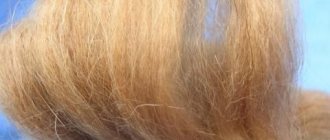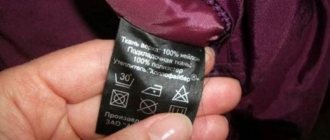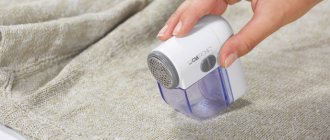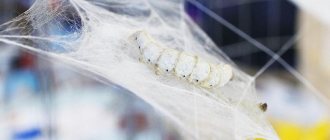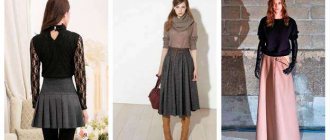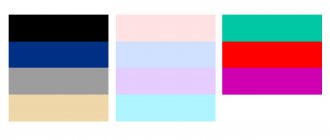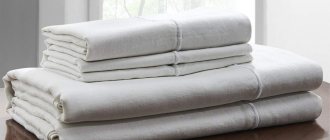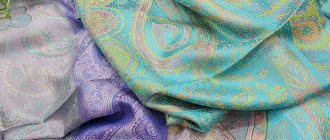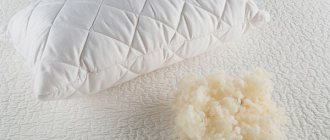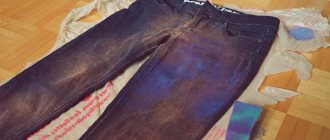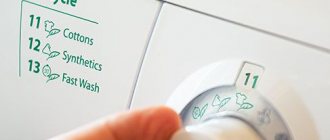A coat is an essential part of an elegant off-season wardrobe. Men's, women's and children's coats are invariably associated with thoughtful looks, excellent taste and a sense of style. What makes them special? Of course, the style and universal compatibility of different coat models makes them very popular for everyday outings, but the real secret to the success of this type of outerwear is their character, which intertwines comfort, warmth, sophistication and brevity.
All this is influenced by the properties of the fabric from which the coat is made. Just think: external characteristics, tactility, ability to retain heat and many other qualities required for outerwear depend on the materials selected for sewing. Today we will tell you how to choose coat fabrics wisely and reveal the pros and cons of popular materials. Are you ready to dive into this amazing world? Begin!
Composition of coat fabrics and their varieties by type of raw material
The first thing you need to pay attention to when choosing fabric for a coat is its practicality and suitability for the season. Both of these parameters are based on the composition and processing method of the fabric. The most popular options both for winter models and for sewing a short demi-season coat, due to their high thermal protection, are all kinds of plain coat fabrics based on wool and polyester (drape), as well as tweed.
Let's talk about the raw material composition of materials for sewing a jacket or coat. It is no secret that traditionally this product group used exclusively fabrics based on natural fibers. Before the invention of high-quality synthetics, there were simply no alternatives to wool, silk, and cotton. Natural, heavy, dense, they warmed well, but were imperfect. Over time, technology improved, and warm fabrics made of viscose, polyester, and acrylic became part of everyday life. Wool still remains the most popular raw material for coat fabrics. Based on it, the following types of materials are obtained. • Worsted - fabrics of medium density, smooth and quite soft, made from twisted thin yarn. • Coarse cloth - heavy materials made of thick yarn, plain weave, reminiscent in texture and density of natural felt or cloth. • Fine cloth - fleecy and embossed fabrics of plain or twill weave based on fluffy and thin yarn.
Drapes are a whole group of fairly thick fabrics with high density. They come in single-layer and double-layer, with different types of front side design - smooth, velor-like, with figured pile, and there is also a felted top. All drape fabrics retain heat well and are not blown through. Drape opens up the broadest horizons for lovers of DIY sewing - thanks to the abundance of composition variations, you can choose this plain-dyed or melange fabric for almost any task. Typically, coat fabrics with the addition of wool are made using the plain or twill weaving method. There are other types of woolen fabrics for coats. • Gabardine is a fairly stiff, dense fabric of complex twill weave, with a pronounced rib. It can be lightweight and dense, suitable for classic coat models. • Cashmere is an ultra-high-quality wool fabric made from the fluff of Kashmiri goats. Incredibly soft, warm and thin, cashmere fabric has become a real brand. Today this can be called soft woolen fabrics with the addition of cotton. • Vigon is a slightly fleecy fabric made from vicuna, llama or camel wool that practically does not pill. • Alpaca is a lightweight demi-season fabric made from alpaca wool and down with hypoallergenic properties. The higher quality raw materials are used to make the fabric, the more premium it is considered. You can determine the composition by looking at the label.
Tweed is a special type of coat fabric, for the production of which predominantly diagonal (twill) weave of threads is used. Traditionally, its basis was wool, but more practical and durable options with the addition of viscose, polyester, and acrylic are increasingly becoming available. Mixed fabric is easier to care for and is ideal for everyday wear, especially when traveling on public transport. Classic wear-resistant coat tweed has a slightly rough surface (there is also the name “English tweed”), ideal for demi-season assortment, suits, and autumn coats. Herringbone or variegated herringbone tweed is a great way to add a pop of color to a transseasonal look. The shades in this material are woven into a variety of colors, which means there is something suitable for everyone. Tweed fabric with a pied-de-poule or houndstooth print is a classic option that is difficult to combine with multiple prints. Tweed is made not only from 100% wool; mixed varieties are also very popular and effective. How much wool should there be as a percentage? Even 20 percent is already excellent for tactile and heat-protective effects. Thick cotton fabrics can also be used for sewing coats. Most often these are materials of reinforced satin weave, but in recent years different versions of corduroy have become popular - ribbed, “corded”, it looks very impressive and relevant. Light demi-season and summer coats are often sewn from silk group materials - brocade, velvet, jacquard. To make these fabrics, natural or artificial silk fibers are used, as well as mixed combinations. There is even a special coat knitwear that is dense and pleasant to the touch. There are also options with double-sided texture. If natural fibers in the composition of coat fabrics are primarily responsible for the aesthetic side and heat-protective properties, then modern synthetic fibers are durable, extremely strong, with an acceptable cost, making it possible to reduce the final cost of the product and extend its service life.
Cotton and others
If woolen fabrics are more suitable for sewing winter types of coats, then cotton fabrics are used mainly for sewing summer and demi-season outerwear. These materials are wear-resistant, hygroscopic, and easy to use. The cotton group includes:
- Raincoat is a lightweight fabric with water-repellent impregnation.
- Boucle (this fabric is also made on a cotton basis).
- Felted knitwear is an elastic fabric with a rough fleecy surface. Lightweight, almost wrinkle-free, retains heat well. Suitable for sewing short coats.
- Moleskin. The base is a satin weave. The fabric is durable, dense, heavy. Moleskin cloth is a brushed type.
- Corduroy ribbed. This material is easily recognized by its narrow and low longitudinal stripes.
- Corduroy is a type of corduroy with wide rips and high pile.
It is worth noting that special fabric is not necessarily used to sew summer coats. Dress and costume textiles are successfully used for this purpose. Fabrics such as jacquard and brocade drape well. Thin textiles in combination with insulation are also often used to sew coats. The main source of heat will be a padding polyester or other lining.
Finishing options and processing methods for coat fabrics
• Pile Fabrics with a textured surface can be very different; what unites them is the presence of pile - looped or cut. Fluffy matter can have the appearance of fur, or it can be almost smooth, with a small underfur, down to microlint. Such fabrics are pleasant to wear, they have an elegant appearance, and with proper care and careful use they last a long time, retaining their benefits for a long time. • Double-sided Two different textures, two different shades, a completely different type of weaving...In one material? Yes, today it is possible! Double-sided coat fabric allows the seamstress to decide which side to make right. One of the sides can be piled, and the other can be decorated with a relief jacquard pattern. Thanks to its two-layer structure, the material benefits not only in originality, but also in heat-shielding properties. • Bouclé “Curly” coat fabric (usually containing wool), as bouclé is often called, is made of fibers of different thicknesses with an abundance of textured elements: knots, loops, lumps. Due to the unusual structure of the fabric, the material becomes voluminous and warm. The spectacular appearance is well preserved only with proper care - such fabric cannot be washed, as puffs can easily form on it.
Sources of wool raw materials
Woolen includes a group of fabrics for the production of which raw materials obtained from various animals are used. The most famous “suppliers” of wool are:
- sheep. It is estimated that 95% of wool fabrics come from the hair of these artiodactyls. Moreover, the highest quality wool is considered to be that cut from the sides and withers of healthy and well-fed animals. Such raw materials are marked with the world-famous mark of the International Wool Secretariat, which guarantees its quality;
- lambs. The wool obtained from their first shearing is called Lambswool. Soft, delicate and silky to the touch, it is used in the production of luxury products that have a significant cost;
- merino. This is a breed of fine-wool sheep that is bred in Australia and Kazakhstan. The fibers obtained by cutting them are warm, pleasant to the body, and have increased hygroscopicity (absorbency is 30%);
- Shetland sheep. They are bred in the Shetland archipelago, located in northeast Scotland. The wool of these sheep is not sheared, but combed throughout the year. From such raw materials, tough, coarse sheep yarn is obtained, from which thick sweaters with a characteristic pigtail pattern are knitted and fabrics are made for the production of coats or jackets;
- Cheviot. This breed of short-haired, semi-fine-wool sheep was bred in England in the 18th century in the Cheviot Hills. It has soft, elastic and elastic wool with long – up to 10 cm – fibers. It is used primarily for the manufacture of high-quality knitwear and soft woolen fabrics, for example, the famous British tweed;
- cashmere goats. The animals live in Mongolia and Tibet, but got their name from the Indian province of Kashmir, where they were originally bred. The raw material used is soft, delicate and surprisingly light animal undercoat. Fabric made from such wool not only has high heat protection, but is also considered the most environmentally friendly and safe. Cashmere products are very expensive; only wealthy people can afford such suits, coats and knitted items;
- Angora goats. Mohair, a durable and beautiful wool, is obtained from the wool of these artiodactyls living in the USA, Turkey and South Africa. It is characterized by excellent silky shine, abrasion resistance and durability. The yarn is initially white, but can be easily dyed in all sorts of shades. Hats, sweaters and jackets made of mohair are worn by both adults and children;
- Angora rabbits. These furry animals are bred in China, the USA and many European countries. The wool obtained from them is called angora and has nothing in common with mohair, which is often passed off as it. Rabbit down is so soft and delicate that products made from it have virtually no weight. The only drawback is rapid abrasion, as a result of which things made from angora do not last long;
- camels. If “Camel wool” is written on a coat or jacket, it means that very warm, practical, soft and durable camel wool was used as a raw material. It is resistant to stains, does not cause allergies and has a beneficial effect on joints. It is noteworthy that camel wool cannot be dyed, so products are produced only in natural colors;
- vigogne. These beautiful graceful animals, relatives of camels and llamas, live in the highlands of the Andes. Their wool is combed out by hand. It is very thin, soft, silky to the touch. The material, which has the same name as the animals, is considered the most expensive wool in the world. Suits made from vigonne fabric cost tens of thousands of dollars;
- alpaca. These are llamas that are common in the highlands of Peru and Chile. They, like the Vigon, have delicate and amazingly thin wool. The price for such products is slightly lower, but still quite significant. Alpaca is used to make beautiful warm dresses, make shawls and scarves, and knit sweaters.
To reduce the cost of some types of wool raw materials, cotton, viscose, acrylic or polyester fibers are added to it. Thanks to this, the fabrics acquire additional strength and become more wear-resistant and durable.
Density of fabrics for outerwear (men's, women's, children's)
For each assortment group, an upper limit is set that limits the maximum density of coat fabric. This is due to the nuances of operation and the physiological characteristics of the recipients of each of the product groups. Simply put, coats for children are not made from materials created for men's clothing, because they are too shape-resistant, quite heavy and not very comfortable for children's wardrobe items. A woman's coat requires medium-weight fabric. Which one is right for you? Here is a list of limiting values: • Fabrics for children's coats - no denser than 350 g/m². • Fabrics for women's coats - no denser than 450 g/m². • Fabrics for men's coats - no denser than 600 g/m².
Requirements for coat fabric
What kind of material should be so that it can be used for sewing coats? Let's look at the description of the criteria for choosing a material. 1) Thermal insulation. A coat is outerwear, which is necessary primarily to keep warm. The level of thermal insulation of different materials may be different, but its very presence is mandatory for coat fabrics. 2) Air permeability is the most important characteristic. Despite the fact that warm materials provide warmth both when it's winter and on a cool summer day, they should always remain breathable to remove excess moisture from the surface of the skin. 3) Resistance to wear and mechanical damage. Outerwear is worn every day in the cold season; it involves traveling on public transport, walking the dog, and the need to withstand sub-zero temperatures. Durable and high-quality fabric that does not deform and does not lose its external characteristics will be the optimal choice. 4) Permanent color. External factors constantly influence outerwear - rain and snow, wind, dust and ultraviolet radiation can become a trigger for fabric fading, so it is better to use reliably dyed fabrics. 5) Individual preferences. Everyone understands the beauty of outerwear in their own way. For some, the rigor of lines and elegance of the product are important, while others prioritize tactility and comfort. Based on personal requirements, it is easy to choose a material that will delight you for several seasons in a row.
Properties of wool fabrics
Since woolen fabrics have many sources of raw materials, their properties differ. However, the qualities that unite them are much greater. Let's look at the most basic ones:
- the ability to retain heat is the main advantage of woolen materials. In such clothes you can stay in low temperatures for a long time and not freeze. Therefore, sweaters, sweaters, jackets, winter coats and other wool products are in constant demand;
- breathability. Knitted fabrics have the greatest aeration, and coarse cloth fabrics have the least, in which tightly knit, almost felted wool does not allow air to pass through and retains more heat;
- hygroscopicity. Not all types of wool fabrics absorb moisture equally well. Some, such as gabardine or crepe, encourage droplets to roll off their surface. But any material made of wool perfectly absorbs steam, accumulating up to 40% moisture. If we take into account that such canvases dry very slowly, then this property should be considered a disadvantage;
- crease resistance. Even with prolonged wear, clothing made of wool, especially if the fabric contains a small percentage of synthetics, does not stretch on the elbows, knees and does not form creases. After washing, if a woolen product is carefully wrung out and laid out to dry on a horizontal plane, it will not shrink or lose its shape;
- plastic. All woolen fabrics, except perhaps the thickest and densest, drape well. This means that with wet heat treatment they can be given the desired appearance;
- functionality. Wool materials are not capricious in cutting and sewing. In most cases, they do not crumble and do not require processing of the edges, they are well stitched without being cut through the seams and do not offer resistance when cutting;
- formation of a static charge. Everyone knows from school physics courses that woolen materials always “spark.” To get rid of this unpleasant phenomenon, fabrics are treated with antistatic agents;
- safety. The fewer synthetic additives in the fabric, the more environmentally friendly, and therefore hypoallergenic, it will be. Therefore, before buying clothes for a child or a person prone to allergies, you need to familiarize yourself with the composition and description of the fabric that is on the label;
- wear resistance. Unfortunately, in this case there is a direct dependence on the presence of chemical fibers. After all, they increase the strength of woolen fabrics and reduce their wear.
An important advantage of woolen fabrics is the rapid dissipation of odors. In addition, most fabrics are resistant to dust absorption and stains.
Interesting fact! The healing properties of wool products are also widely known. Even in ancient Rus', to get rid of toothache or headache, they tied a woolen scarf or scarf.
How to choose material for a product?
We have already decided that the group of coat fabrics is very broad and includes materials with diametrically opposite tactile and density properties. So what should you use to make your intended coat? And if you choose not a coat, but an elongated warm vest, jacket, cape or trench coat?
Here are general recommendations for choosing materials, taking into account seasonality
Models for cool summer or the first days of autumn require fairly light but dense base materials, mainly with a textured surface. Velvet, jacquard and corduroy are excellent, as well as thin woolen materials (gabardine, boucle, cashmere). Autumn - capricious, fickle, rainy - is the time for mixed materials. They have impressive performance characteristics, which is important when choosing in favor of practicality. As the temperature outside the window drops, you should choose warmer models, which, accordingly, require denser, heat-saving, cozy materials. Pile coat fabrics, so soft and fluffy, are located on the border between interseasonal and winter materials. The fibers covering their surface form a heated air layer, which increases the heat-protective properties of the fabric.
There are a few more important nuances
• Cutting and sewing loose materials (for example, boucle) is much easier than dense ones, because flaws in cutting and subsequent work on them are almost invisible. • If you choose pile fabric, keep in mind that it is cut in one direction, which increases waste. • Pure wool fabric will definitely shrink during WTO.
Classification
The reason that fabric products are so different in appearance is the different way the material is made. Here are several classifications of coat fabrics:
- By season: summer, winter, demi-season.
- In the production of fabric, different types of thread weave are used: plain, twill, satin, satin.
- The production process includes additional types of processing: felting, napping, anti-shrinkage treatment, water-repellent treatment.
- Coat fabrics differ in coloring: smooth-dyed, melange, variegated.
The main classification of coat fabric is division by type of material.
Advice: Always pay attention to what the coat is made of. This will help you make the right choice: one material will keep you warm in winter, and another will keep you comfortable in cool summer weather.
Most coats are made from woolen fabrics, but sometimes cotton and synthetics are used.
We sew a coat for winter
Sewing a high-quality and comfortable winter coat is not a trivial task. Why? For a coat to be functional, warm, beautiful, and comfortable, it must be a kind of “layer cake.” What layers does the winter range model consist of? We will move from the outside in to consistently study all the necessary materials. 1) The main material is the coat fabric you have chosen, natural, synthetic or mixed. 2) Wind protection and air exchange are incredibly important nuances. No matter how warm and beautiful the coat is, if it is blown through, it’s all lost. You can't wear it in winter. To create a windproof layer, a membrane is often used - a breathable fabric that prevents wind and moisture from penetrating inside. A thin membrane or its analogues directly after the coat layer is an excellent choice if you plan to create something truly warm and comfortable to wear in frosty weather. 3) If in demi-season coats the ability to retain heat in cold weather depends solely on the properties of the main fabric, winter models are sewn with insulation. Today, seamstresses and designers have the opportunity to choose the thickness, insulating properties, density, and weight of insulation, because modern materials, even with minimal thickness, can have exceptional characteristics. Many insulation materials available today to a wide range of buyers do not deform and hold their shape well even without additional stitching. Some insulation materials (for example, woolpon) do not add volume to the product at all, while others (such as padding polyester) make the model “puffy”. We recommend relying on thermal protection indicators, because the functionality of winter outerwear is still a priority when sewing it. 4) Lining - a thin layer of fabric, usually slippery, on a viscose base, which is needed to protect the upper layers from abrasion, to strengthen the structure of the product and for wearing comfort. It's hard to imagine a full-fledged coat without lining! If the coat is long, the lining can be made short, but it should still be present. If you design your future product exactly according to this “layered” pattern, they will definitely delight you all winter.
How to care for products made from coat fabrics
Almost all coat fabrics are not recommended to be washed either by hand or in a machine. The priority way to get rid of dirt is chemical cleaning, and if such a radical action is not required, you can simply wash the stain with soapy water or use a clothes brush with soft bristles. If pellets form, you should use a special device to remove them. Often fine dust and hairs stick to coat fabrics. A roller with adhesive tape will help remove such stains. Before sewing coat fabric yourself, decating is required - for natural shrinkage of the material. How to iron coat fabrics? If the need arises, it is better to use a steamer, holding it 2-5 cm from the surface of the fabric. What is the best fabric for your project? We will be happy to help you choose the right material. Our store’s assortment includes dozens of spectacular classic and trendy natural, wool blend, and synthetic materials in the current palette!
